About fusion
Ready to prepare your sample into either a glass disk (for XRF) or an acid solution (for ICP, AA or wet chemistry)? Katanax fluxers can adapt to the most specific sample type with an ease never featured on any fusion machine.
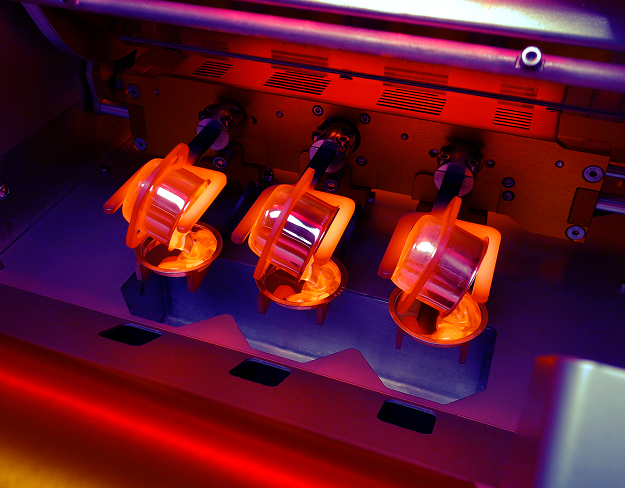
Definition
Fusion is a technique used to prepare inorganic samples with the goal to analyze them by x-ray fluorescence (XRF), inductively coupled plasma (ICP), atomic absorption (AA) or any traditional wet chemistry method.
A fusion can produce either a small, homogenous glass disk (or “bead”) for XRF, or an acid solution for other analytical methods.
Advantages
The process of fusion as a sample preparation method exhibits many advantages over other methods, as it does not produce mineralogical, grain size or orientation effects and the result is perfectly homogenous. Fusion is also capable of preparing samples that are very refractory, and otherwise hard to digest.

Temperature and Flux
In sample preparation by fusion, the sample never actually melts. It is merely dissolved into a solvent. This solvent, generally a lithium borate flux, is solid at room temperature and must be liquefied to dissolve anything. This is the only reason the process requires heat. Therefore, the actual fusion temperature depends almost exclusively on the flux blend.
The specific LiT/LiM blend, in turn, depends on the sample type: alkaline oxides [MnO, MgO, FeO] call for acidic fluxes [more LiT], while acidic samples [TiO2, SiO2] call for alkaline fluxes [more LiM] and neutral samples [Fe2O3, Al2O3] call for 50/50 mixes.) Also, the addition of a sample can significantly reduce the melting point of a given flux. This is why one should never exceed 1050-1100 °C, as it is not required but more importantly because flux and some samples evaporate faster with higher temperatures.
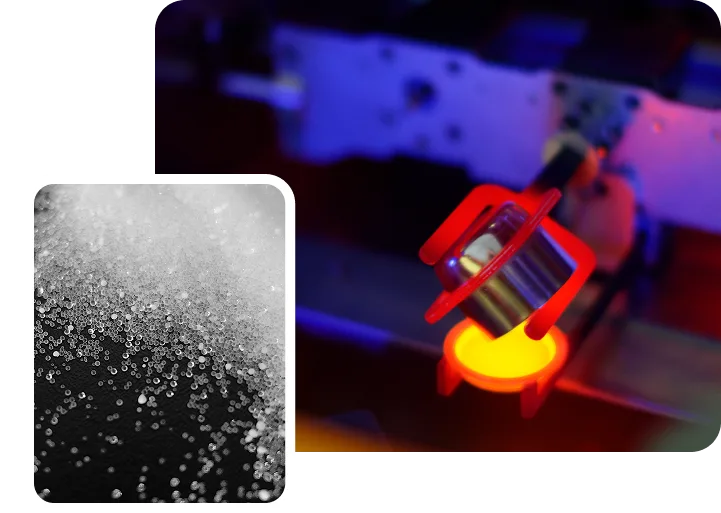
Fusion Temperature
Keep in mind that fusion involves the melting of the flux, which then acts as a solvent for the sample.
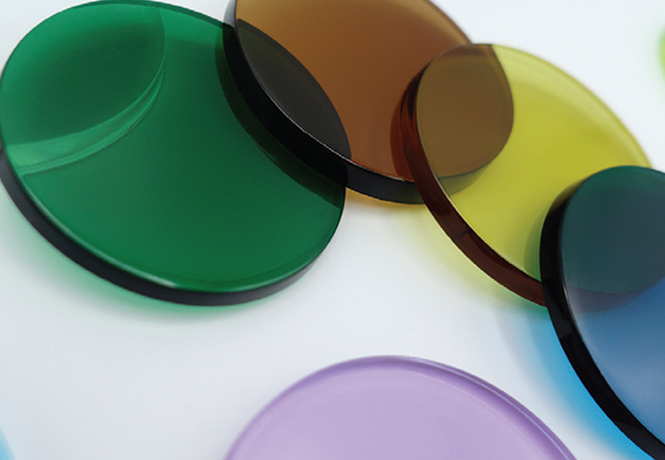
Non-wetting agents
Non-wetting agents (NWA) act as surfactants that make the melt less prone to sticking to platinumware. Non-wetting agents are halogen compounds (generally containing Iodine, Bromine or Fluorine) and typical formulations include KI, LiI, LiBr and NaI. Only a few milligrams are required.
We strongly recommend using such a non-wetting agent, to lengthen the mold’s life expectancy.
General directions
(typical fusion example)
- Grind your sample <100 µm
- Accurately weigh about 0.5 g sample in a 95%Pt/5%Au crucible (actual mass will depend on sample solubility in flux)
- Accurately weigh about 7 g of flux (actual total mass in crucible will depend on the mold diameter)
- Add a few milligrams of non-wetting agent (the NWA, typically LiBr, prevents the melt from sticking to the crucible)
- Place the mold and crucible in the fluxer
- Select a method from the instrument’s memory press “OK”.
Making solutions
If one wishes to make solutions only (for ICP or AA), the preference goes to straight LiM, which has a great dissolution power, but would lend crystallized disks. For solutions, amounts of sample and flux are smaller (about the half), and fusion times are shorter.
In all cases, the best guideline is to always fuse at the lowest practical temperature. If some prefer higher temperatures, it is most certainly because their recipe is not quite optimal.

Warning:
When directly pouring the hot melt into a dilute acid, there exists a risk that the solution burst violently, and so some important guidelines need to be followed:
- Never use more than 0.25 g LiBr non-wetting agent per crucible
- Never directly pour hot fusion melts prepared with sodium-based fluxes. (Let the melt cool down in the crucible and then manually dissolve the solid in the dilute acid.)
- Never go higher than a 1:5 ratio (sample:lithium flux)
- Always wear proper protective equipment: face shield (or minimally, safety glasses), lab coat and gloves.
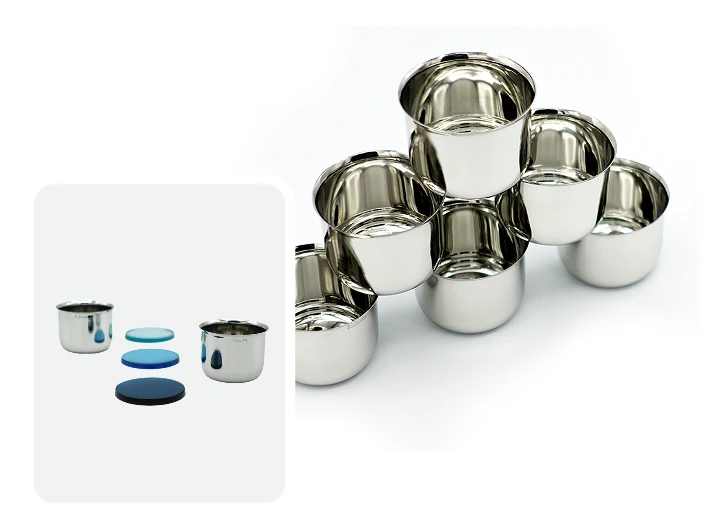
Oxidation
When the sample to analyze contains metallic species, one must pay great care that those species be oxidized before the temperature reaches the point where alloying between the crucible and the sample.
If metallic species remain in the crucible, a potentially irreversible damage to the platinumware may occur, as well as a loss of sample. Therefore, one must select a suitable method to fully oxidize the sample:
- Natural oxidation. This is for samples that spontaneously oxidize rapidly at high temperatures. No need to add anything, as these samples will just combine with ambient oxygen to form stable oxides.
- Liquid oxidation. This involves the addition of a liquid base or acid to oxidize the material to fuse. The choice depends on the sample type (two reagents may be required in some cases). Typically, the sample is weighed in the platinum crucible, and a few milliliters of acid/base are added. The crucible may be placed on a hot plate (or directly in the K1) to promote the reaction at temperatures below 100 °C (not possible on gas-fired machines). Then, the flux is added and the fusion is carried out in the fluxer.
- Solid oxidation. This generally involves the use of nitrate or carbonate compounds. They are mixed with the sample, and sometimes with just a little flux. A first heating step is performed in the fluxer, and 250~750 °C, depending on the oxidizer type. Then, if required, more flux is added, and the fusion is completed.
- Calcination. This is normally performed in a regular lab oven, in ceramic crucibles, around 1000 °C. This operation burns carbon to CO2. If there are no other components to oxidize, the sample is transferred to a platinum crucible, the flux is added and the fusion is carried out in the fluxer.
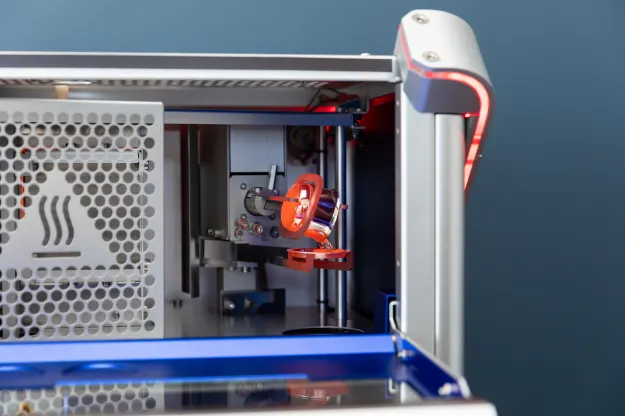
Conclusion
- Make sure your samples are oxidized or oxidize them using a suitable method (Katanax team can help you on that).
- Weight components accurately (fusion will not likely introduce any analytical error, but weighing might).
- Use a non-wetting agent, for a better melt transfer from the crucible and an easier bead extraction from the mold.
- Fuse at the lowest practical temperature.
- Enjoy the results!

